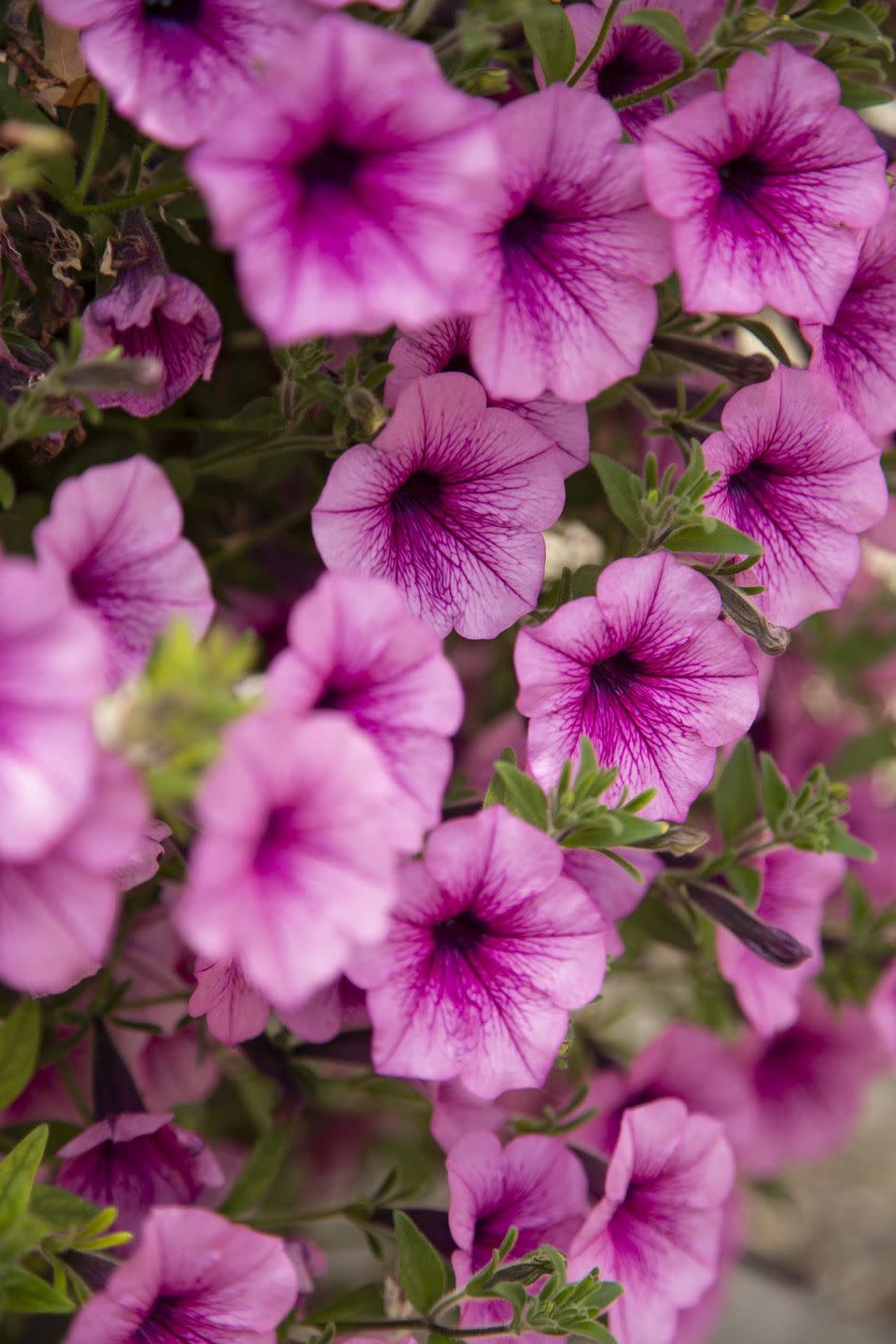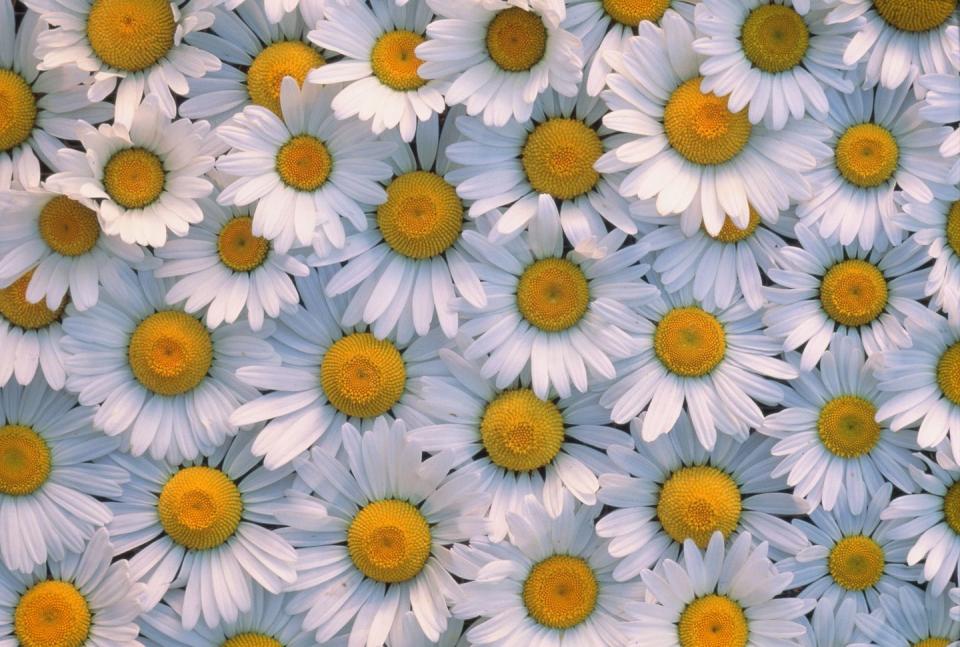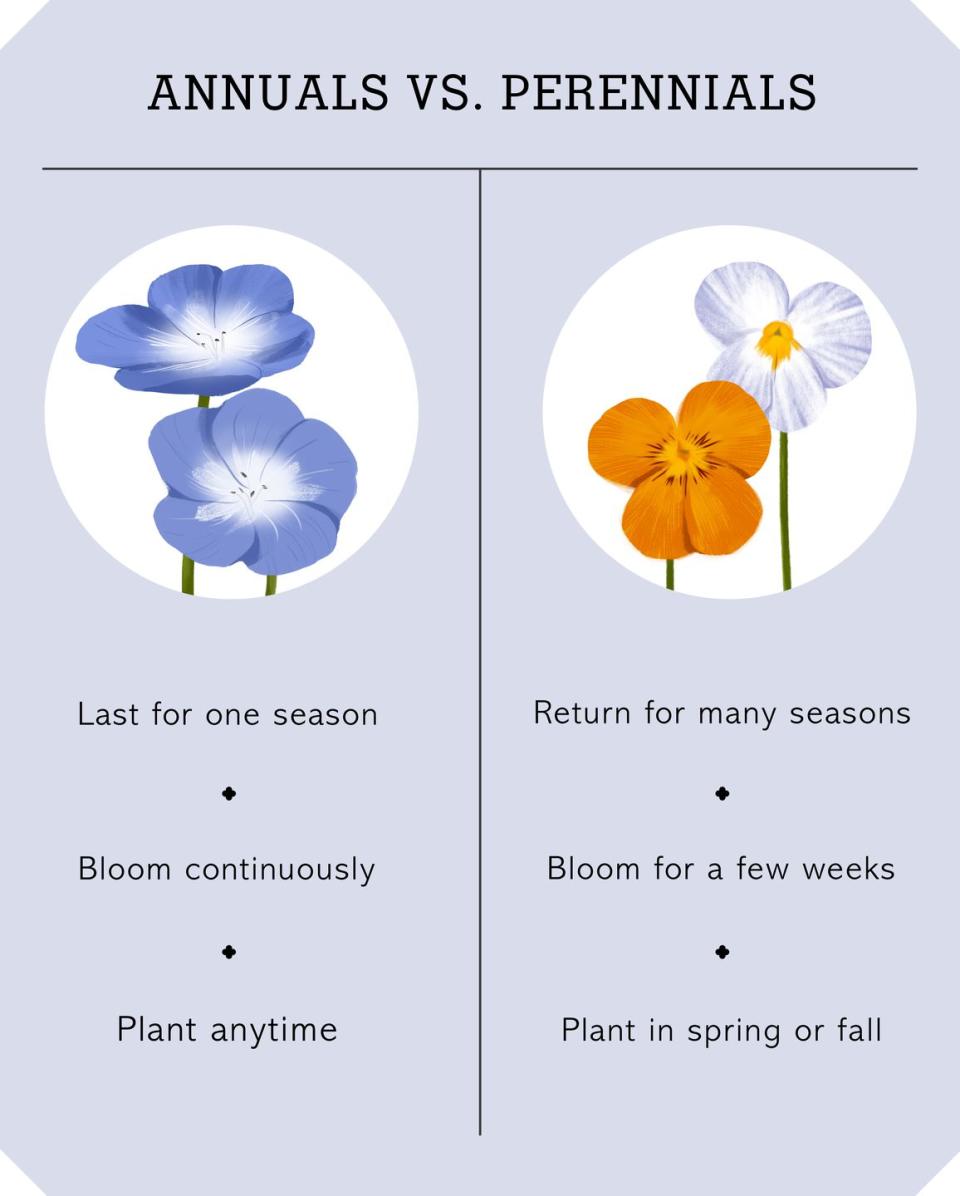Wait: What's the Difference Between Annuals and Perennials Again?
"Hearst Magazines and Yahoo may earn commission or revenue on some items through these links."
If you're starting to plant a garden—or even just buy some plants—you've probably come across the terms "annual" and "perennial" at least once or twice. (You may have even seen "biennial plant" thrown in there.) So what, exactly do they mean? Can you plant both kinds? Are annuals or perennials better to plant in your yard?
First off: no kind is better. There are great annual flowers and great perennial flowers that you can (and should!) plant in any garden. And there are great reasons to include both! Here's everything you need to know about what the terms mean, what they mean for your garden, and how to use both to your advantage when planning and planting.
What is the difference between annual and perennial?

The short answer is that annuals don't come back. Plants that flower and die in one season are annuals—although many will drop seeds that you can collect (or leave) to grow new plants in the spring. Annuals will also typically bloom all season until frost, so you get consistent color and showy blooms. Another advantage is that these plants can typically go in the ground any time, even in midsummer, to refresh your beds.

Conversely, perennials come back for many seasons. While the top portion of a perennial dies back in winter, new growth appears the following spring from the same root system. While this makes planting easier, there are some drawbacks. Perennials tend to have less flashy flowers and bloom for a shorter period of time, usually just two to six weeks. Perennials also tend to do best when planted in the fall or spring, no later than six weeks before the ground freezes (about mid-November for most of the country).
What are biennials?
To further complicate things, some annuals become perennials in warmer climates, when the lack of a hard frost allows them to keep growing. And just to make life interesting, some plants take two seasons to flower; they’re called biennials.
Tips for Planting Annuals and Perennials
Mix it up. In a garden just as in life, there is value to having variety. Perennials cut down on the work of planting (and some provide great ground cover) while annuals adds long-lasting beauty and longer bloom times. Having a variety of plants also provides habitat for many different pollinators and other garden visitors.
Give them some help getting established. Water all plants deeply right after planting, especially during dry spells. Use mulch to preserve moisture and keep down weeds, which compete for water and nutrients. (Here's how to calculate how much mulch you need.) Feed your plants with a slow-release general purpose fertilizer. Follow the label, and don’t go overboard. Too much fertilizer can cause weak growth that’s susceptible to pests and diseases.
Pick the right spot. Read the plant label before deciding where you’re putting your new plants. In general, full sun is considered six to eight hours per day. Part shade means roughly three to six hours of sun. Full shade is about three to four hours a day. Don’t try to cheat. While some plants tolerate less-than-ideal conditions, it doesn’t make sense to set your plants up for failure.
Be patient. Most perennials are not going to “wow” you the first season. “Crawl, walk, run” often is the phrase you’ll hear about perennials. They seem to poke along the first year and then grow a little more convincingly the second, finally taking off during the third growing season.
Do some maintenance. At the end of the season, clean up leaf debris to make sure diseases and pests don’t overwinter. Some perennials need to be divided every three to five years. If they get too big for the space, have a lackluster bloom, or stop flowering in the center of the clump, dig a chunk off the edge and replant elsewhere in your garden. Try to do it in early spring, but don’t panic if you have to divide them later in the season. Most perennials are tougher than you think.

You Might Also Like

